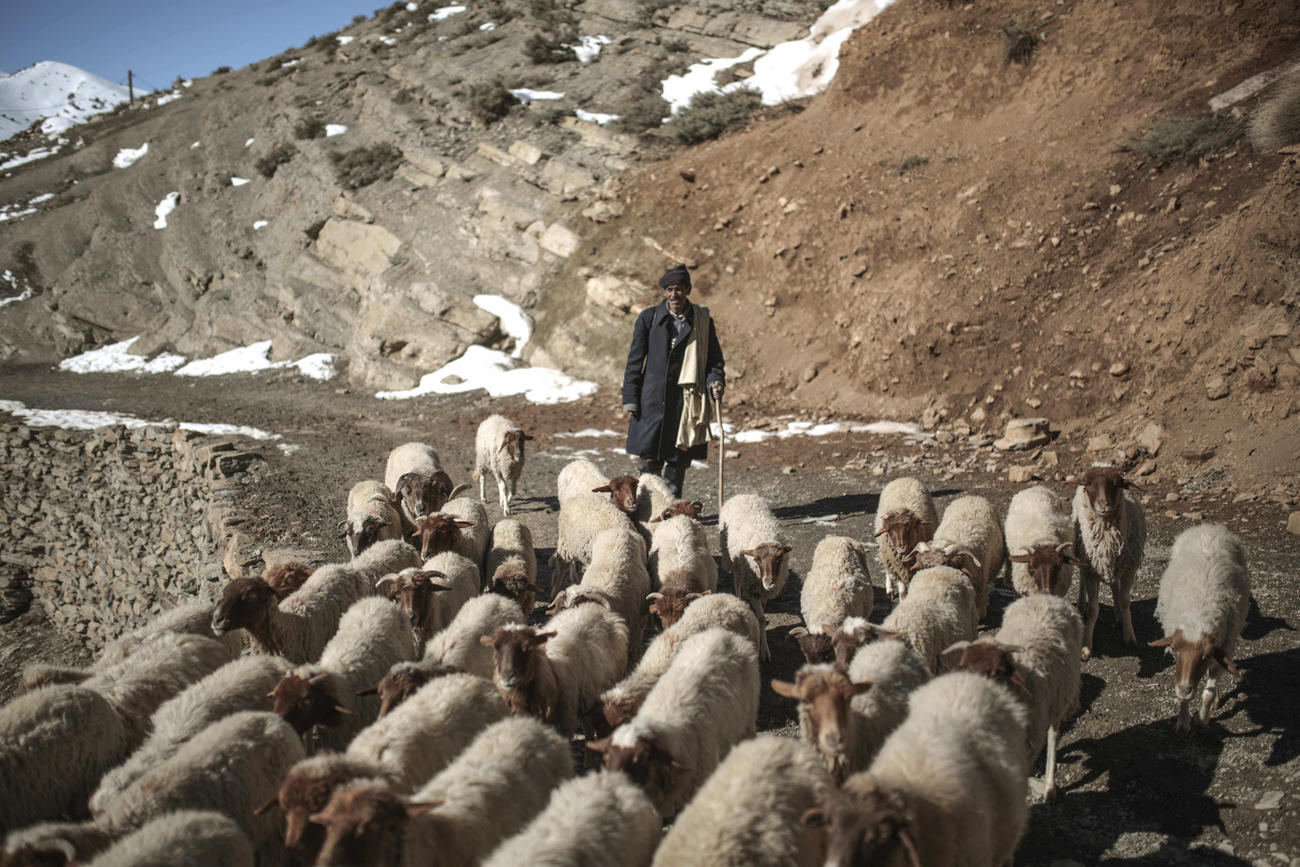EPFL software aims to protect the world’s most endangered species

Researchers in Lausanne have developed software that helps biologists better identify animal and plant species most exposed to climate change and thus improve conservation methods.
Scientists at the Federal Institute of Technology in Lausanne (EPFL)External link have built software that combines genetic and environmental databases. Their time-saving research should help evolutionary and conservation biologists as it gives them direct and simultaneous access to the databases which show how genetic variants fit with certain eco-climatic zones, EPFL said in a statement.
The software, named R.Samada, assesses the relationship between genetic and environmental information – such as precipitation, wind, sunlight and cloud cover – and generates graphs and maps that allow researchers to visualize the data rapidly. The software was unveiled in a paper published in Molecular Ecology ResourcesExternal link.
“The software identifies the genes involved in the process through which a species evolves to adapt to weather conditions”, explained Stéphane Joost, corresponding author of the paper and thesis supervisor of Solange Duruz, first author.
“With this software, we wanted to give evolutionary and conservation biologists a single, simplified point of access to all of the processing and analysis of genetic and geo-environmental information commonly used to assess the status of species, particularly those whose survival is threatened by climate change.”
Moroccan sheep
For their research, the EPFL team studied sheep in northern Morocco that have a specific gene that has developed over thousands of years. The gene makes the sheep secrete a type of wax from its coat, protecting them from the heavy precipitation in the High Atlas region where they live. By preventing a sheep’s coat from rotting, the gene protects it against potentially fatal skin diseases.
When the scientists generated a map of Morocco showing the location of sheep with the genetic marker that protects them from rain, biologists can see that a certain variant of this gene is only present in sheep living in the mountainous areas of the Atlas region. In the deserts of southern Morocco, sheep lack this genetic marker.
As the planet becomes warmer and as biodiversity decreases, evolutionary biologists are pursuing two parallel aims: they want to cryopreserve the DNA of species threatened with extinction and to identify the environments in which a species is most likely to survive in a given climate scenario.
The EPFL wants to further develop the software, especially to generate conservation zones based on various climate scenarios involving temperature increases of between 1.5°C and 4°C between now and 2100.
“Once the software has this feature, we will be able to more accurately pinpoint the zones at risk and those that could provide refuge,” said Joost.
Work is also planned to adapt the system to marine zones, with a view to preserving coral for example, and to improve map resolution.

In compliance with the JTI standards
More: SWI swissinfo.ch certified by the Journalism Trust Initiative
You can find an overview of ongoing debates with our journalists here. Please join us!
If you want to start a conversation about a topic raised in this article or want to report factual errors, email us at english@swissinfo.ch.